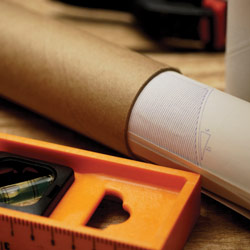Can I Patent It?

The other night, while watching The Silence of the Lambs on TV, inspiration struck. I thought to myself, “I wonder if it’s difficult for Hannibal Lecter to eat with that big, scary-looking mask over his face?” And then, eureka! My idea for the newest diet fad was born. Surely, if I attach a mask to my face so that I am physically unable to fill my mouth with cheeseburgers, the pounds will drop off pretty quickly, right?
Before I hire Kirstie Alley to pitch my product, however, I should probably apply for a patent so no one can copy my brilliant idea. But is this eligible for a patent? Let’s walk through the standards for a patentable idea and see. First we’ll discuss what types of inventions can be patented, and then we’ll touch on the requirements an invention must meet.
Types of Patents
The United States Patent and Trademark Office (USPTO) divides patents into three broad categories: utility patents, design patents and plant patents. Utility patents are by far the most common type—when the average person thinks of a patent, he or she will almost always be thinking of a utility patent. The scope of utility patents is rather broad. Machines with moving parts, products without moving parts, computer programs, compositions of matter (e.g. chemical compounds, metal alloys) and business methods (which has been a booming category recently) are all patentable inventions under the utility category. This type of patent accounts for more than 85 percent of all patents issued by the USPTO and can last up to 20 years.
Design patents, which can last only up to 14 years, refer strictly to the ornamental design of a product. Less than 15 percent of all patents are design patents, and they are primarily used to prevent product knock-offs. In some ways, design patents are similar to trademarks in that they are intended to prevent competitors from producing confusingly similar products.
Plant patents, which account for less than one percent of all patents issued and last for up to 20 years, deal with new strains of plant hybrids, mutants, etc. produced in cultivation. Algae and microfungi are also subject to plant patents…so if you’re experimenting with microfungi in your basement, as I often do, now you know what type of patent you need.
So what can’t you patent? Laws of nature, physical phenomena, abstract ideas/mental processes, mathematical formulas, printed matter, naturally occurring substances, inventions that violate the laws of physics and inventions whose sole purpose is illegal or immoral are all categories of non-patentable ideas. Thus, your perpetual motion torture device will not be received favorably at the USPTO.
Obviously, my diet mask falls into the utility patent category. The important question now becomes: What do I have to prove in order to get a patent on my invention?
Requirements for Patentability
The USPTO looks for three criteria in every patent application: utility, non-obviousness and novelty. Utility (and yes, it is a little frustrating that they use the word “utility” in two different ways) simply means that your invention has to be useful in some way. This standard is incredibly low; a reasonable person doesn’t need to find it useful, but rather the invention just has to do something. Thus, if I create a new chemical compound, but I have no idea how it could be used, I fail this test because there’s no utility. Luckily, my diet mask easily passes this test, as it is clearly useful for preventing the ingestion of food.
The next requirement an invention must have to be patentable is that it must be non-obvious. This is a highly subjective standard, and whether a given invention is obvious might just vary from one USPTO patent examiner to another. Many rejected patent applications are rejected because this prong of the test is not satisfied. The most important question concerning non-obviousness is “non-obvious to whom?” Most inventions will not be obvious to your random John and Jane Doe. Thus, in order to qualify as non-obvious, an invention must not be obvious to someone of ordinary skill in the field of the invention. So if an electrical engineer takes a circuit board and swaps out some electronics for some different electronics to increase its efficiency, you and I might think that was definitely not obvious, but if a person with ordinary skill in the field of electrical engineering would look at the invention and say, “oh yeah, that was obvious,” no patent will be issued. Again, I’m pretty sure my diet mask is safe, because if the idea of making yourself look like one of cinema’s most notorious serial killers for the sake of losing a few pounds is obvious to you in any way, I would be quite surprised.
Finally, the USPTO considers the novelty of an invention, which basically means they try to figure out if anyone had this idea before you did. In the United States, patents are issued to the first person to actually invent something, rather than the first person to apply for the patent, which is the opposite of the system in much of the rest of the world. Thus, it must be determined that you didn’t just rip off someone else’s idea and run to the patent office before they could get there. Sadly, my diet mask fails the novelty test. In 1982, the USPTO issued United States Patent number 4,344,424 to a woman in Sacramento, California for an “Anti-Eating Facemask.” I knew my dream was too good to be true.
It’s back to the drawing board for me, but hopefully this primer will give you a better understanding of the patent process and whether your next idea is eligible for patent protection. iBi

